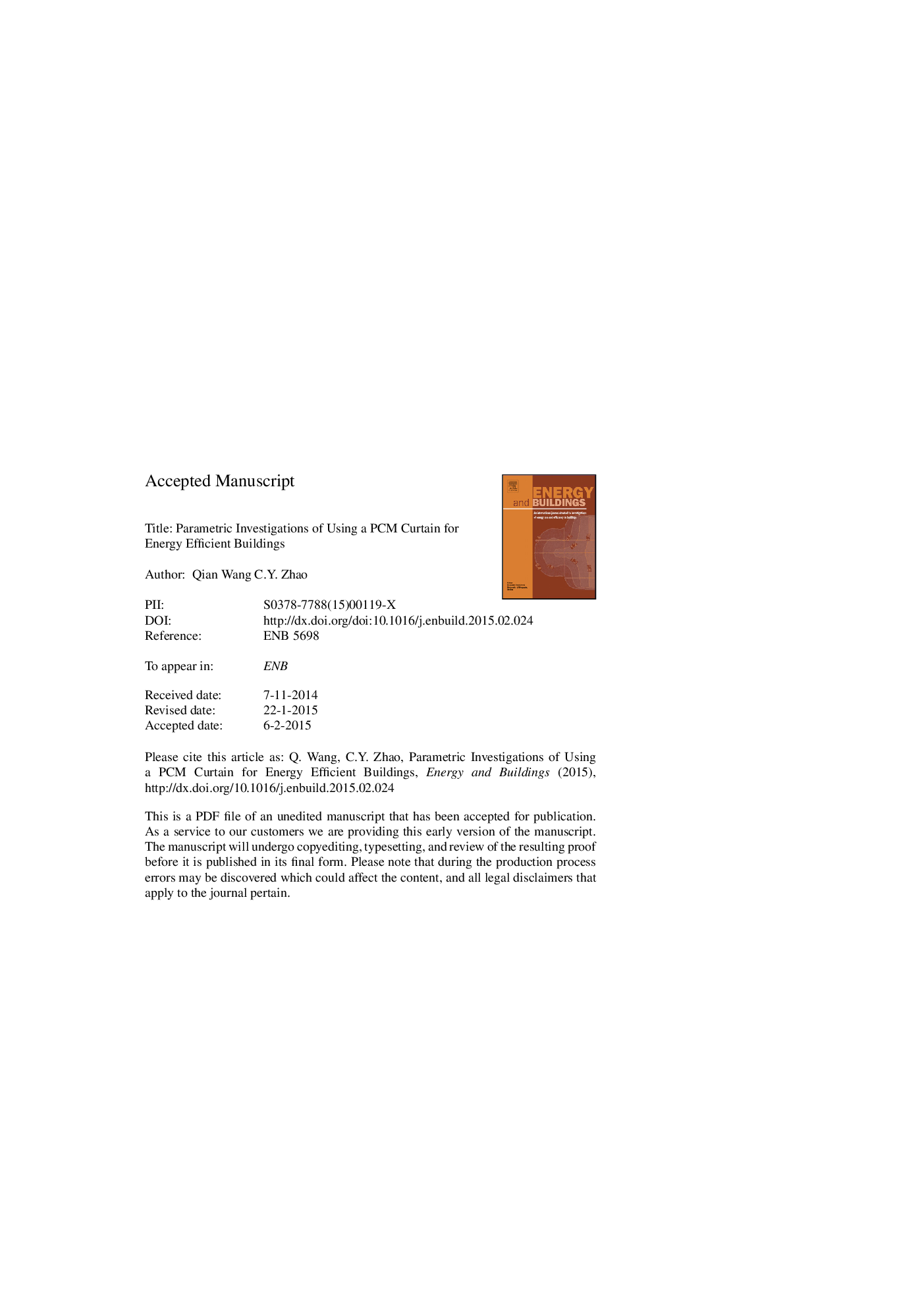| Article ID | Journal | Published Year | Pages | File Type |
|---|---|---|---|---|
| 6731616 | Energy and Buildings | 2015 | 30 Pages |
Abstract
In building envelopes, windows are considered as a weaker heat link due to their small thermal resistance and transparency to solar radiation. This is responsible for a large portion of solar heat gain in buildings. In this study, a flexible and low cost technique using a window system with a PCM (phase change materials) curtain inside is proposed to reduce the solar heat gain in hot summers. Parameters such as air gap thickness, PCM melting temperature and PCM layer thickness have been varied in order to reveal their thermal effectiveness on heat gain reduction. It is found that natural convection is enhanced at thicker air gaps, which shows negative effects in reducing the heat gain. The PCM melting temperature is essential for the window system, which should be selected and optimized based on the simulation results. Heat gain can also be reduced by using thicker PCM layers with a proper melting temperature. It is found that the average heat transfer rate into the indoor space during working hours can be reduced by as much as 30.9% when using a 15 mm PCM layer with a melting temperature at 29 °C in the hottest summer days in Shanghai. The proposed technique is promising for future applications.
Related Topics
Physical Sciences and Engineering
Energy
Renewable Energy, Sustainability and the Environment
Authors
Qian Wang, C.Y. Zhao,
